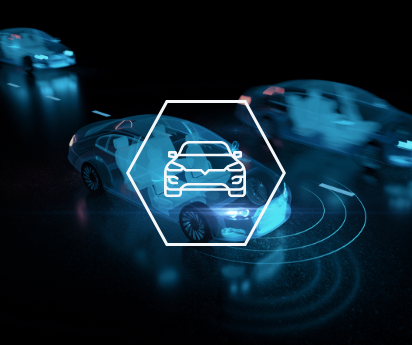

The Advantages of Event-Based Computing for Radar/LiDAR Applications
In the rapidly evolving field of radar technology, the demand for more efficient, responsive, and adaptable systems is ever-growing. Traditional radar systems have served us well for decades, but the advent of event-based computing combined with temporally aware neural networks is poised to revolutionize the landscape.
This innovative approach offers significant advantages, particularly in applications where speed, precision, and resource efficiency are paramount.

Let’s explore the key benefits of event-based computing for radar applications and examine some compelling use cases it can support.
Enhanced Responsiveness
and Real-Time Processing
Traditional radar systems often rely on periodic sampling of a point cloud, where data is collected at regular intervals regardless of the presence or absence of relevant signals. This approach can lead to inefficiencies, especially in environments where significant events are sparse. Event-based computing, on the other hand, processes data only when meaningful events occur, such as the detection of a moving object. This leads to a more responsive system, capable of real-time processing with minimal latency.
For radar applications, this means that event-based systems can rapidly respond to changes in the environment, providing timely and accurate information. For instance, in aerospace applications, where the ability to track and respond to fast-moving aircraft is crucial, event-based radar can ensure that no critical events are missed, thereby enhancing safety and efficiency.
Resource Efficiency and
Power Savings
Radar-Lidar systems often operate in power-constrained environments, such as on unmanned aerial vehicles (UAVs) or in remote sensing stations. Traditional radar processing can be resource-intensive, continuously consuming power even when no significant data is being processed. Event-based computing dramatically reduces power consumption by activating processing resources only when needed.
In military radar systems, for instance, where long endurance and low power consumption are critical, event-based computing can extend the operational life of systems in the field. This also reduces the cooling requirements for radar systems, further lowering the overall energy footprint.
Improved Data
Management and Reduction
of Data Overload
Radar systems generate vast amounts of data, much of which may be irrelevant or redundant. Handling such large data volumes can overwhelm processing systems and networks, leading to delays and inefficiencies. Event-based computing reduces data overload by focusing only on relevant events, which results in more manageable data streams and easier storage.
In autonomous driving systems, radar sensors are crucial for detecting obstacles and navigating complex environments. Event-based radar systems can filter out unnecessary data, ensuring that only critical information, such as the sudden appearance of a pedestrian or another vehicle, is processed. This leads to faster decision-making and improved safety.
Scalability and
Adaptability
Event-based computing offers a high degree of scalability, making it suitable for a wide range of radar applications, from small-scale systems like automotive radars or lidars to large-scale systems used in weather monitoring and defense. Moreover, event-based systems are highly adaptable; they can be fine-tuned to different environments and conditions without requiring significant changes to the underlying hardware.
In weather radar applications, for example, event-based computing can be used to focus on specific weather events, such as the formation of tornadoes or severe storms. This allows meteorologists to allocate resources efficiently, providing more accurate and timely warnings to the public.
Use Cases Supported by Event-Based
Computing in Radar

1. Autonomous Vehicles
In the automotive industry, radar and lidar are critical components of advanced driver-assistance systems (ADAS) and autonomous vehicles. Event-based radar-lidar systems can enhance the performance of these vehicles by ensuring that only the most critical information is processed, reducing the likelihood of accidents and improving the overall driving experience.
2. Military and Defense
Event-based computing is particularly valuable in military radar systems, where rapid response and resource efficiency are paramount. Applications include missile defense, battlefield surveillance, and reconnaissance. Event-based systems can provide real-time threat detection and tracking, ensuring that military assets are protected against emerging threats.


3. Unmanned Aerial Vehicles
UAVs and smaller drones are typically seen navigating in wide open spaces, but increasingly, the deployment and use of these devices is in increasingly in tighter environments and crowded airspace, requiring collision avoidance to become automatic and instantaneous, providing the capabilities to be utilized in cluttered environments.
4. Robotics
Event-based radar can also be used in autonomous robots, tracking the environment and the movement of all objects into its physical zone of interaction, for collision avoidance, but also navigation and advanced tasks such as grasping and movement of objects and discriminating devices based on their movement.

Learn More About the Technology
Event-based computing represents a significant advancement in radar technology, offering numerous advantages over traditional approaches. When combined with Temporally enabled Neural Networks (TENNs), its ability to enhance responsiveness, improve resource efficiency, reduce data overload, and offer scalability makes it an ideal solution for a wide range of radar applications.
As the demand for more efficient and adaptive radar and lidar systems continues to grow, event-based computing is set to play a crucial role in the future of this technology. Whether in autonomous vehicles, aerospace and robotics applications, the potential of event-based radar systems is vast, promising greater accuracy, safety, and efficiency.
Download the whitepaper “Enhancing Object Detection and Tracking in Radar and LiDAR
Systems with Event-Based Computing and Temporal-Enabled Neural Networks”
by filling out the form below.
Ready to experience the future of AI?
Learn more about how BrainChip’s TENNs can transform your
AI strategy and advance solutions development.



